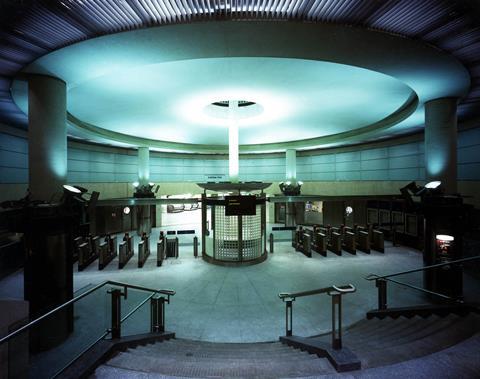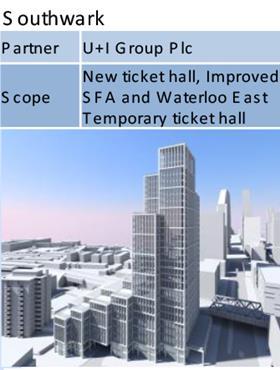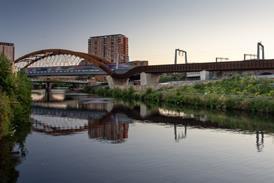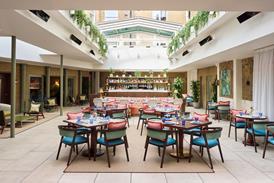Reconstruction of Richard MacCormac’s rotunda ‘should be made a planning condition’

The boss of MJP Architects wants the developer of a 30-storey tower which would be built on Southwark Tube station to be forced to reconstruct the ticket hall.
It should be made a condition of planning, said Jeremy Estop, managing director of the practice that designed the Jubilee Line station in 1999, in an open letter.
Estop said he was disappointed that plans being drawn up by AHMM for TfL and U+I involved demolishing Richard MacCormac’s circular, top-lit ticket hall.
MacCormac himself was very proud of the building – part of the lauded Jubilee line extension – and would probably have been active in trying to save it, he said. MacCormac died in 2014, six months after Roland Paoletti, the TfL architect who was responsible for driving the high quality of architecture on the Jubilee line extension.
BD revealed this week that the station was turned down for listing by Historic England, paving the way for the high-density redevelopment plans.

Estop said: “In the modern world it’s good to look for pragmatic solutions and since they would have to build a new ticket hall it doesn’t seem an unreasonable planning condition to make them rebuild it. The cost probably wouldn’t be that different.
“Often in these listing debates you are talking about a building that’s more than 200 years old and once it’s gone, it’s gone. But in this case the building is 18 years old; the records are still there; the technology is current technology. It’s not difficult to recreate that space in concrete and stainless steel, and reusing any parts they can salvage.”
The station was a very major building in the practice’s output, he said.
“You can see the continuing strands coming through from the collegiate projects that preceded it and themes opening up that appeared in the Science Museum and BBC, like the blue glass wall,” he said.
Jeremy Estop’s open letter
It is disappointing to read of the plans to change the ticket hall at Southwark Station. Details of the proposed development are not yet available and we do not know the extent of demolition that may be proposed or what form the replacement ticket hall may take. However, I would make the following observations;
The chain of new stations on the Jubilee Line extension were an extraordinary achievement. It was a massive challenge, both technically and architecturally, to create complex new public buildings of this quality. They set a benchmark for tube station design far higher than any other post-war examples.
At Southwark Station, the ticket hall is an integral part of a spatial journey through the station, from the street to the platforms. The architectural quality of the station is as much about this sequence of spaces as it is about the detail.
Cities will always be changing, but there are plenty of examples of new developments which incorporate and preserve the integrity of existing buildings. Otherwise we end up with incoherent buildings and urban development.
Our design was for an 11-storey building over the station and the existing foundations are designed for this. At 30 storeys, new foundations are clearly required and getting in the piling rig can be the only real reason for demolition of the ticket hall.
However, a new ticket hall will need to be built, and there is no reason why the simple circular form and detailing of the original ticket hall could not be re-built within the new building, even if it needs to be at grade and if ‘back of house’ areas need to be reconfigured. The spans between columns could be short and not structurally challenging.
This would be sufficient to preserve the sequence of spaces as originally conceived, without imposing unreasonable constraints on the 30-storey building above. For a building which has been recognised for its high architectural quality, rebuilding the ticket hall to match the existing design would not be an unreasonable planning condition, even if not listed.
Jeremy Estop
Managing Director
MJP Architects Limited

















8 Readers' comments